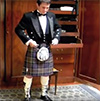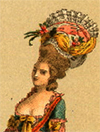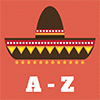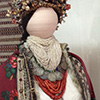Home
 Let’s find out how to put on the full formal Prince Charlie outfit. Dr. Nick Fiddes, the governor of the Scottish Tartans Authority, will kindly share a few personal tips and tricks with you. He will show you the order of choosing and wearing the garments, which he finds works best. You can really feel like a manly man in a properly worn highland outfit.
Let’s find out how to put on the full formal Prince Charlie outfit. Dr. Nick Fiddes, the governor of the Scottish Tartans Authority, will kindly share a few personal tips and tricks with you. He will show you the order of choosing and wearing the garments, which he finds works best. You can really feel like a manly man in a properly worn highland outfit.
- Details
- Category: Scotland
- Hits: 41988
 Japanese traditional outfits are very noble-looking and beautiful, but they often are extremely complicated in wearing. We’ll help you to learn how to wear the yukata – a kind of women’s kimono used in summer.
Japanese traditional outfits are very noble-looking and beautiful, but they often are extremely complicated in wearing. We’ll help you to learn how to wear the yukata – a kind of women’s kimono used in summer.
Hello everyone, my name is Ayumi Hoshino. I will show you how to wear yukata.
- Details
- Category: Japan
- Hits: 7474
 Learn how to wear the Korean female winter clothing step by step. The outfit includes underwear, the main garment, outerwear, and accessories. You’ll find here all the tricks you need to know. How to look striking in Korean folk dress? Easy, just follow the instructions below.
Learn how to wear the Korean female winter clothing step by step. The outfit includes underwear, the main garment, outerwear, and accessories. You’ll find here all the tricks you need to know. How to look striking in Korean folk dress? Easy, just follow the instructions below.
- Details
- Category: Korea
- Hits: 45831
 Hockey! Who could forget that bit of Canadian national pride? There's miss Canada Chanel Beckenlehner in the Canadian national costume at the Miss Universe show. All people love relationships with symbols and stereotypes in Canada. Maybe that's why this is the national dress that had everyone in Canada talking.
Hockey! Who could forget that bit of Canadian national pride? There's miss Canada Chanel Beckenlehner in the Canadian national costume at the Miss Universe show. All people love relationships with symbols and stereotypes in Canada. Maybe that's why this is the national dress that had everyone in Canada talking.
- Details
- Category: Canada
- Hits: 9257
 So, everybody wants to know what the Qatari «Uniform» is.
So, everybody wants to know what the Qatari «Uniform» is.
First of all, you've got to be fit.
You've got to make sure that your Thobe is nice and fit.
I wish I was fit, but you know.
(Thobe is the traditional Arabian clothing for men (spelled "thobe" or "thaub"). A long tunic).
- Details
- Category: Qatar
- Hits: 29947
 How do Asian-Americans feel when they wear the traditional clothes of their ancestors for the first time? Are they comfortable? embarrassed? excited? Do they feel the connection to their roots better? Here you are several short interviews that will answer all of the questions. It’s so sweet.
How do Asian-Americans feel when they wear the traditional clothes of their ancestors for the first time? Are they comfortable? embarrassed? excited? Do they feel the connection to their roots better? Here you are several short interviews that will answer all of the questions. It’s so sweet.
- Details
- Category: China
- Hits: 3948
 She puts on her clothes, with help in a particular order, including, a shift, stays, petticoats, pockets, roll, stockings and garters, gown and stomacher, apron and shoes.
She puts on her clothes, with help in a particular order, including, a shift, stays, petticoats, pockets, roll, stockings and garters, gown and stomacher, apron and shoes.
The shift was the undergarment worn next to the skin.
Made from linen, it was washable and protected the clothes from bodily moisture and the body from the possibly harsh textiles being worn.
- Details
- Category: England
- Hits: 4816
 Traditional pieces of the male and female national costumes in India: achkan, angarkha, bandhgala, chador, chaniya, choli, chunder, churidar, dastar, dhotar, dhoti, dupatta, gamucha, gandhi cap, ghagra сholi, gurgabi, jama, jutti, kameez, kurta, langa, lehenga, lehenga choli, lungi, mekhela, mundu, mysore peta, neriyathu, odhani, pagri, pancha, pavada, pheran, pheta, riha, sador, safa, salwar, sari, sarong, sharara, sherwani, taqiyah, and veshti.
Traditional pieces of the male and female national costumes in India: achkan, angarkha, bandhgala, chador, chaniya, choli, chunder, churidar, dastar, dhotar, dhoti, dupatta, gamucha, gandhi cap, ghagra сholi, gurgabi, jama, jutti, kameez, kurta, langa, lehenga, lehenga choli, lungi, mekhela, mundu, mysore peta, neriyathu, odhani, pagri, pancha, pavada, pheran, pheta, riha, sador, safa, salwar, sari, sarong, sharara, sherwani, taqiyah, and veshti.
- Details
- Category: India
- Hits: 4420
 The American continents have a very long and exciting history of using cold weapons. So, these knives, daggers, and even axes became a solid part of the folk costume for some countries of North and South America. Particularly, the traditional outfits of Native American Indians (who populated the territories of the modern US and Canada) and the national costumes of Argentina, Brazil, and Uruguay include the dress knives of various shapes and purposes. Let’s find out more about the mentioned dress knives.
The American continents have a very long and exciting history of using cold weapons. So, these knives, daggers, and even axes became a solid part of the folk costume for some countries of North and South America. Particularly, the traditional outfits of Native American Indians (who populated the territories of the modern US and Canada) and the national costumes of Argentina, Brazil, and Uruguay include the dress knives of various shapes and purposes. Let’s find out more about the mentioned dress knives.
- Details
- Category: Nationalclothing
- Hits: 4368
 When people hear a phrase “Egyptian traditional clothing”, they think about the attire of the Ancient Egypt. But actually, the folk dress used in modern Egypt differs much from the wrap-around garments that barely covered the bodies of ancient Egyptians. Since the 1500s, citizens of Egypt tend to cover their body parts thoroughly. Locals inherited a lot of features from the clothing fashion of Ottoman Turks, Europeans, and Muslim countries. But some tribes of Egypt are still keeping their own centuries-old tradition in clothes, e.g. the Bedouins and the Nubians.
When people hear a phrase “Egyptian traditional clothing”, they think about the attire of the Ancient Egypt. But actually, the folk dress used in modern Egypt differs much from the wrap-around garments that barely covered the bodies of ancient Egyptians. Since the 1500s, citizens of Egypt tend to cover their body parts thoroughly. Locals inherited a lot of features from the clothing fashion of Ottoman Turks, Europeans, and Muslim countries. But some tribes of Egypt are still keeping their own centuries-old tradition in clothes, e.g. the Bedouins and the Nubians.
- Details
- Category: Egypt
- Hits: 97061
 Traditional pieces of the male and female national costumes in Hungary: bocskor, bikla, bunda, cifraszűr, csepesz, daróc, dolman, full gatya, gatya, guba, gyűszű, hárászkendő, harisnya, kis bunda, kodmon, kuchma, kuzsók, mellrevaló, mente, pacsa, palást, párta, pendely, pille, rokolya, suba, szűr, and tüsző.
Traditional pieces of the male and female national costumes in Hungary: bocskor, bikla, bunda, cifraszűr, csepesz, daróc, dolman, full gatya, gatya, guba, gyűszű, hárászkendő, harisnya, kis bunda, kodmon, kuchma, kuzsók, mellrevaló, mente, pacsa, palást, párta, pendely, pille, rokolya, suba, szűr, and tüsző.
- Details
- Category: Hungary
- Hits: 6824
 Various Japanese dolls are an important part of the everyday life and culture of Japan. Many of them have a symbolic meaning or depict the local fashion and style, regional peculiarities, and the sophisticated traditional taste in clothes. The craftsmen who make the Japanese dolls try to be accurate and precise in every detail of a dress, a hairdo, and accessories. So, we can use these dolls to learn more about the folk outfit of Japan and the clothing traditions of this country.
Various Japanese dolls are an important part of the everyday life and culture of Japan. Many of them have a symbolic meaning or depict the local fashion and style, regional peculiarities, and the sophisticated traditional taste in clothes. The craftsmen who make the Japanese dolls try to be accurate and precise in every detail of a dress, a hairdo, and accessories. So, we can use these dolls to learn more about the folk outfit of Japan and the clothing traditions of this country.
- Details
- Category: Japan
- Hits: 8709
 The national costume of Ukraine always includes a necklace. In old days, the rings, earrings, or bracelets were traditionally less common. But a necklace was a must-have and an integral part of any attire – festive or daily dress. It served not only as an embellishment but also as a protection amulet and a mean to show the status and financial capability of the wearer. The Ukrainian tradition of using various necklaces is rich and exciting.
The national costume of Ukraine always includes a necklace. In old days, the rings, earrings, or bracelets were traditionally less common. But a necklace was a must-have and an integral part of any attire – festive or daily dress. It served not only as an embellishment but also as a protection amulet and a mean to show the status and financial capability of the wearer. The Ukrainian tradition of using various necklaces is rich and exciting.
- Details
- Category: Ukraine
- Hits: 8257
 Many countries of the world use embroidery among their main crafts. Since ancient times, embroidery patterns have been a way of communication between people, a mean of keeping and transferring the knowledge, and a believed protection against negative influences, rather than just a simple decorating technique. A lot of people are certain that only the most richly embellished garments made from expensive fabrics can be beautiful and exquisite. We’d like to prove them wrong. In the article below, we’ll show you that even simple patterns, small amounts of embroidery, and usual natural fabrics can be gorgeous if the craftswoman treats her craft with enough imagination and creativity.
Many countries of the world use embroidery among their main crafts. Since ancient times, embroidery patterns have been a way of communication between people, a mean of keeping and transferring the knowledge, and a believed protection against negative influences, rather than just a simple decorating technique. A lot of people are certain that only the most richly embellished garments made from expensive fabrics can be beautiful and exquisite. We’d like to prove them wrong. In the article below, we’ll show you that even simple patterns, small amounts of embroidery, and usual natural fabrics can be gorgeous if the craftswoman treats her craft with enough imagination and creativity.
- Details
- Category: Nationalclothing
- Hits: 23551
Page 62 of 70
